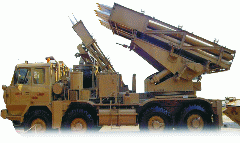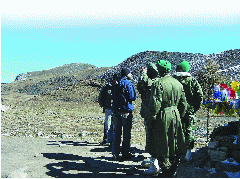Archives
Cover Story
 The small group of Indian soldiers fought on the way, but they were no match for the invading army personnel. The Chinese even reached Tezpur- a busy town of central Assam, which is around 250 km east of Guwahati - but suddenly they deserted the location and declared a unilateral ceasefire. The war resulted in the loss of thousands of lives for both the sides. It is understood that the then US government came in support of India and threatened Beijing, telling it to withdraw its army from Indian soil. Since that incident, India has had a tense relationship with China, and Beijing too continued their argument that Arunachal is a part of Tibet and hence belongs to them.
The small group of Indian soldiers fought on the way, but they were no match for the invading army personnel. The Chinese even reached Tezpur- a busy town of central Assam, which is around 250 km east of Guwahati - but suddenly they deserted the location and declared a unilateral ceasefire. The war resulted in the loss of thousands of lives for both the sides. It is understood that the then US government came in support of India and threatened Beijing, telling it to withdraw its army from Indian soil. Since that incident, India has had a tense relationship with China, and Beijing too continued their argument that Arunachal is a part of Tibet and hence belongs to them.
Prior to China, the region was invaded by the Burmese army, which was later defeated by the British forces in 1826 and that way it went under the greater Indian territories. And this is the imperative debate, endorsed by the separatist groups (and their sympathizers) of the region, that Assam (and the North East) were never a part of India before the Yandabu Agreement between the Burmese and British authority.
As India achieved freedom from British colonial rule in 1947, the North East came under Bharat (greater India).  But there are individuals and communities in the region, even today who prefer not to identify themselves as Indians.
But there are individuals and communities in the region, even today who prefer not to identify themselves as Indians.
So when a Chinese writer argued for the splitting up of India into 20 to 30 nation states and eventually supporting the insurgent groups of the country, the conscious people of the North East expressed shock and anguish.
Posted on a website (www.iiss.cn) by one Zhan Lue, the article even described that after dismantling India, Beijing could bring Nepal, Pakistan, Bhutan, Bangladesh etc into its fold. The writer also suggested that China should push the local aspirations of various indigenous communities like the Assamese, Nagas, Kashmiris and Tamil with the final aim to make India fractured and weak.
The article, originally written in Chinese, even insisted that the break up of India was for the benefit of China and Asia as a whole.
The Government of India initially remained silent on the issue. But soon the media made it a big issue in the country, where it was almost described as Beijing’s hidden agenda towards its neighbour in the south.
Finally, the Indian foreign ministry, in a statement clarified that ‘the article in question appears to be an expression of an individual’s opinion and does not accord with the officially-stated position of China on India-China relations conveyed to us on several occasions’.
 The statement issued on the 10th of August however cautioned that ‘opinions and assessment on the state of India-China relations should be expressed after careful judgment based on the long-term interests of building a stable relationship between the two countries’.
The statement issued on the 10th of August however cautioned that ‘opinions and assessment on the state of India-China relations should be expressed after careful judgment based on the long-term interests of building a stable relationship between the two countries’.
Reciprocating New Delhi’s concern, Beijing alienated itself from the article describing it as unauthorized. Earlier, the website editor Kang Lingyi asserted that they were no way connected with Beijing.
Moreover, he clarified that the website is not also linked to the Chinese government think-tank, the China Institute for International Strategic Studies.
But there are, among Assamese intellectuals, people who are concerned that the Chinese writer (Zhan Lue) echoed the language of the militants belonging to ULFA (United Liberation Front of Asom) in the article.
There was a time, when the separatist armed outfit ULFA opposed the election in Assam, which was conducted under the provisions of the Indian Constitution, but slowly they faced rejection from the electorate.
Even today, the outfit tries its best to prevent the celebration of India’s Independence Day (Aug 15) and Republic Day (Jan 26) in the region, but the citizens have started defying their diktat in visible ways.
There is also wild apprehension in the North East that as New Delhi has gone closer to Washington, Beijing may find it irritating and so China may join hands with the Indian neighbours to counter New Delhi’s influence in the region.
The recent media reports about the initiative taken by the ULFA leaders to find hide-outs inside China were taken  seriously by the conscious citizens of the region. It is understood that after Bangladesh and Burma turned hostile to the outfit, the ULFA leader Paresh Barua has started maintaining relations with the Chinese government.
seriously by the conscious citizens of the region. It is understood that after Bangladesh and Burma turned hostile to the outfit, the ULFA leader Paresh Barua has started maintaining relations with the Chinese government.
Baruah, who is believed to be in Dhaka for many years, had reportedly gone to China’s Yunnan province to reach an understanding with the local Chinese administrators. The ULFA has plans to start a training camp for its cadres some where in the Yunnan-Burma border areas. The ULFA chief Arabinda Rajkhowa even wrote an official letter to Beijing a few months back asking for support for their armed movement.
Amid the debate, both the Indian and Chinese soldiers as usual observed India’s Independence Day at the city of Bumla in Arunachal Pradesh on the 15th of August this year. A special border personnel conclave was organized in which a Chinese delegation led by Colonel Yang Zijing reaffirmed the commitment on both the sides to strengthen friendship and also maintain peace and tranquility.
India’s resolve to maintain a warm relationship with China was articulated by New Delhi’s initiative to honor Chinese scholar and Indonologist, Ji Xianlin, who has contributed immensely by translating various Sanskrit texts into the Chinese language. Honoring Ji Xianlin with India’s third highest civilian honor, the Padma Bushan, was a major initiative by the Indian government, argued Jiang Kui of Beijing University, who also said in a telephone interview that it would make a lot of difference in the way many Chinese look at India hereafter.
Regardless of reasons, it will be a real difficult job to separate the North East from mainland India, as the number of people opposing the armed struggle against New Delhi is increasing day by day. Today more and more students from the North East go to Delhi, Bangalore, Hyderabad, Mumbai, Pune for studies and many of them go on to work in other parts of India.
Communication facilities have been developed in the region and the local media, once preferring to be anti-New Delhi, has changed its face. Though common resentment against the Union government in New Delhi is present, very few people in the region might pursue the separatist theory to go with Islamabad, Dhaka or Beijing.
Comparision Between India and China in different Sectors:
| SECTOR | INDIA | CHINA |
| Roads | Out of India 3.3 Million Km road network, only 2% of the total are national highways. Only 8000 Km (12%) of the national highways are dual carriageways, and not all of them are four - lane. | By the end of 2007, China had some 53,600 Km of highways with four lanes or more. |
| Railways | By 2012, China's railroad will expand from 79,000 Km today to 1,10,000 Km. by the same date, India's railway network will inch 2,000 Km ahead to reach 65,300 Km. | In 2008 alone, China began construction of 5,148 km of new lines - more than twice India's target for new lines over the next four years. |
| Power | In 2007, India achieved capacity addition of only about 7,000 MW | China added nearly 1,00,000 MV in the same year |
| Urban Infrastructure | The Average driving speed in Delhi has fallen from 27 Kmph in 1997 to 10 Kmph in 2009. Other lesser endowed cities have far worse transportation systems. Walkways for pedestrians and space for cyclists have disappeared | In spite of having four times more vehicles than India, China's death toll in road accidents is 60% of India's (Nearly 1,30,000 people die in road accidents in India.) |
| Telecom and IT Infrastructure | India has 2.8 crore PCs, 0.54 Crore Broadband subscribers and 5.2 crore internet users. | China has 16.2 crore PCs, 8.5 Crore Broadband subscribers and 29.8 crore internet users. |
| Sewerage | Only 13% of the sewage produced in Indian cities is treated. | By the end of 2007, China's sewage treatment capacity reached 80 million tons per day, and urban sewage treatment rate hit 58 %. |
| Vocational Training | India has only 5000 ITI's with just 5% of the existing workforce in India receiving skill training. | China has 5,00,000 institutes of vocational training, 100 times more than india. 96% of Korean, 75% of German and 80% of Japanese workforce received skill training. |

